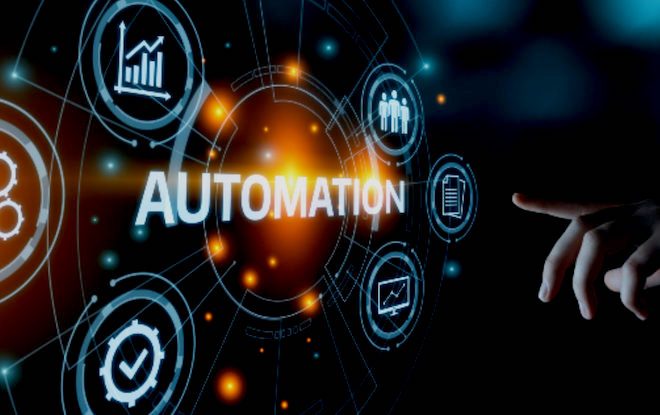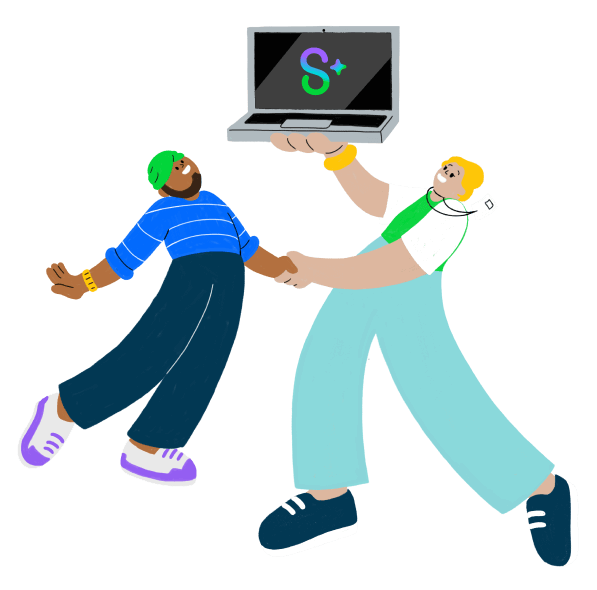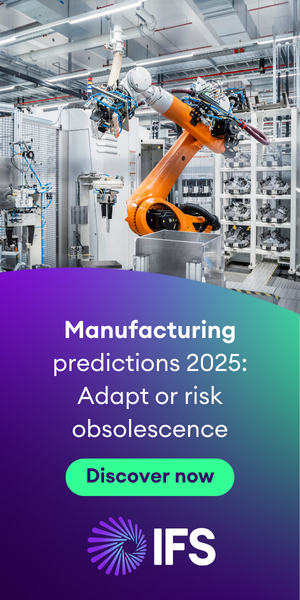The technology recipe for factories: Amongst a melting pot of AI project outcomes, chocolatier Barry Callebaut gives a taste of how the manufacturing industry can create smooth quality assessment, predictive maintenance and information management with the right solution mindset to reduce the heat on workforces.
The very nature of manufacturing tasks is evolving, with organizations today requiring a smooth blend of traditional and digital skills. To find out more from the factory floor up, ERP Today spoke to global chocolate and cocoa product manufacturer, Barry Callebaut.
For over a century, Barry Callebaut has manufactured chef-grade Belgian chocolate, and now champions the promise of 100 percent sustainably sourced cocoa beans to manufacture chocolate products for chefs’ standards with “workability that never fails.” From its chocolate products to its operations, it’s a message that the manufacturer is keen to carry throughout the business.
Now operating “in a very disruptive external environment,” the Group’s CEO, Peter Feld, shared the firm’s bid for increased resiliency back in April. Welcoming an “integrated and diversified business model,” Feld says Barry Callebaut aims to get “even closer to [its] customers, streamlining operations and accelerating digital transformation.” But, where is the biggest blocker for this chocolate factory’s success?
“Talent is one of the most important challenges we face,” explains Bram Van Genabet, digital strategy director at Barry Callebaut. “The labor force is aging. People with 30-40 years of experience are retiring. A lot of that knowledge historically was paper-based.”
It’s a common challenge, as some 36 percent of vacancies in manufacturing are proving hard-to-fill with applicants lacking the appropriate skills, qualifications or experience, compared to an average of 24 percent across all industries. For their shop floor operations in particular, firms are struggling to find the right people, as employees retire or leave their roles, taking their knowledge with them.
Replicating operator performance
Faced with this lack of new upcoming skills, manufacturers like Barry Callebaut are seeking answers in technology, leaning towards automation and predictive AI as a way to ease the pressure on their over-loaded workforces. For Van Genabet, that means putting paper-based information into a predictive AI model, which the company can make accessible to the rest of the organization.
“We can create tools that make sure the performance of the best operator is replicated,” he says. “That helps us when experienced operators are unavailable or during summer peaks when we have more junior operators running the lines. That’s where you get a lot of learning experiences as well.”
Elsewhere, Van Genabet points out that new workers joining the industry have certain expectations. He explains manufacturing environments can be harsh – it’s loud and there can be high temperatures, making it difficult to find people who wish to work in those conditions. Here too, automation and AI, fueled by IoT data from sensors, is helping to create a more desirable environment for employees – and potential employees.
For Van Genabet, deploying a network of technologies can help to transform the factory floor working environment: “We are into development and application of advanced and smart sensors, and leverage AI to build predictive models to tell us where we need to make modifications. It’s this combination that will allow us to bring operators out of these loud, hot conditions, and into more desirable air-conditioned control room environments from which they can control multiple lines.
“This is an evolution where we’re going to need people, technology, data and processes to make it possible,” he says. “That’s going to be an important trend for the blue-collar worker.”
Freeing up employees
Industrial manufacturing software from AVEVA was Barry Callebaut’s solution of choice. Speaking to Jim Chappell, AVEVA’s global head of AI, he shares how the technology looks to help manufacturers in areas such as quality assessment, predictive maintenance and information management.
For example, utilizing predictive analytics capabilities, manufacturers can start to flag flaws in machinery and optimize maintenance schedules to minimize unplanned downtime, as well as the human time spent on repairs. Additionally, the AI technology can process data and produce valuable insights in a fraction of the time that a human worker could, freeing them to act on that information.
The technology can also improve a factory’s safety for its workers, says Chappell: “With AI-driven vision using digital cameras, it can detect safety and quality issues, improving the work environment and resulting manufactured products.
“And with the power of generative AI and large language models, workers will be able to ask questions like ‘Why is this machine less efficient now than it was last week?’ and get an answer they can act on swiftly,” he continues. “In the past it might have taken several hours or even several days of work to get to that conclusion.”
For the AVEVA AI head, the technology is also making it possible for workers on the shop floor to continually gain new skills and adapt to the needs of a changing industry.
“No one can be an expert on everything, and as the manufacturing industry evolves there are ever more manuals, spec sheets, maintenance data, etc. for workers to try to keep abreast of to do their job well. AI can distill that information down and make it easier for them to get up to speed, get to the information they need, and optimally maintain factories,” says Chappell.
A taste of manufacturing’s future – the role of humans
With the advancement of AI, it is natural to wonder what role humans will play as we forge a path toward an Industry 5.0 future. Certainly, in manufacturing, experts agree that AI is not a replacement for human intellect. Instead, it extends human capabilities, teaching and helping them become better at what they do.
“Humans are needed to both shape and train AI and to interpret the output,” says Chappell. “For example, over the last few years, we’ve seen the emergence of the prompt engineer, a job that was unheard of five years ago but is now something that is critical to implementing an effective generative AI solution.”
Van Genabet agrees: “If you look at aviation, you still have a pilot running the airplane – even if the vehicle is on autopilot. The role of the operator will be more like this. They’ll have the right tools to tell them how things are running but still need to be able to act and intervene in the process when something is going wrong.
“Sensors might fail. Systems might make an unexpected prediction. They need to have the right tools and knowledge to override the technology – becoming more focused on managing the exceptions than running repetitive operational tasks.”
Manufacturers need quality data for hungry tools
However, one of the biggest challenges that an organization faces is that AI is only as good as the data feeding it. In a recent Advanced Manufacturing Report from industrial technology company Hexagon, it was found that 98 percent of manufacturers struggle with data-related issues, hindering the adoption of advanced technologies.
“While AI is a very powerful tool, it’s also very data hungry,” says Tim Gaus, principal and smart manufacturing business leader with Deloitte Consulting. “The data readiness of companies and their ability to integrate and then maintain the data sets required for meaningful insights continues to be a challenge. Most companies have partners to create the right model or a similar internal capability, but it’s the management of a heterogeneous data environment across locations and the inevitable changes that come to that data set that pose the largest challenges.”
But while getting the data right is critical, it doesn’t mean that the data needs to be perfect. For Gaus, companies need to find the proper balance between risk and accuracy that fits their application.
Half of AI projects fail
Graham Upton, head of technology and innovation, and chief architect, Intelligent Industry at Capgemini, also points out that “establishing a good data foundation and putting the right architecture in place – including having the right skills and resources to do it correctly – is essential to make AI effective in manufacturing and maximize its potential.”
Upton also urges manufacturers to “stop and think” before acting on their AI plans.
“We are seeing a lot companies failing to implement AI effectively. Indeed, 50 percent of projects fail and 78 percent stall prior to deployment. Companies should take the time to understand why AI is needed and the benefits it brings, not just roll-out AI for AI’s sake. Ensure that the training datasets have the right information in them as there is a risk that poor input equals poor output – and rogue data can bring undesired outcomes. Therefore, select those AI projects that will provide the best return on investment for your business.”
From the director of the chocolatier’s digital strategy, Van Genabet’s advice to manufacturers looking to implement AI into their operations is also to have a clear goal. Know what it is you’re aiming to optimize – then do it in small and iterative steps.
“We ran our first project like this, just one process line with one specific KPI that we were trying to improve. We ended up going through several iterations and the key learning for me was that even though we took a relatively small scope, there was lots of complexity and we encountered challenges.
“Another observation is that the improvements we did in the process were often easy fixes that in some cases took less than an hour to implement,” says Van Genabet. “But without the predictive model and insights from the data, we would not have been able to identify the improvement opportunity. We need technology and cross-functional teams for solving a real business problem, not technology for the sake of technology.”
AI: a golden ticket?
From the end-user perspective, a successful AI implementation can improve business productivity for both experienced and new employees. It can seem like a golden ticket win – for your skilled employees, you need ways to automate what they do to free up their time, while new generations of workers need ways to achieve more without extensive training and experience.
However, AVEVA’s Chappell warns organizations not to get swept up in the hype around AI, as it must bring tangible benefits.
“Potential risks must be understood and managed, as well as the rewards,” says Chappell. “For this, organizations must ensure they have clear aims, and a clear definition of what success will look like. It’s also important that anything that is implemented is easily managed and scaled; any AI project will fail if it’s too difficult or too complicated.”
Given the current noise around AI across all industries, it will come as no surprise that 75 percent of advanced manufacturing companies still say that adopting technologies such as AI is their top engineering and R&D priority, according to research by Bain.
“The time to act is now,” says Guido Vetter, partner and member of Bain’s Advanced Manufacturing and Services practice. “AI is no longer a choice: It’s a pressing reality that is disrupting business models and industries virtually across the board, and, therefore, is a CEO and board-level issue.”
For Vetter, it’s a question of refining what good tastes like at scale and placing your bets on the best mechanisms and checks to achieve it: “The question organizations are gearing for is how to really establish AI at scale and leverage it for value generation and differentiation from the competition. That means fully understanding the technology and its uses, while still placing considered bets on where AI implementations will deliver a true paradigm shift.”
He firmly adds, however, that “Companies which are not acting now will face a serious competitive disadvantage in the near future.”
What’s clear is that a straightforward golden ticket to success isn’t guaranteed when it comes to undertaking a manufacturing automation project. But, an implementation is also thankfully more than just a game of chance; supplying the right mindset, support and strategy, manufacturers are surely in it to win it.






